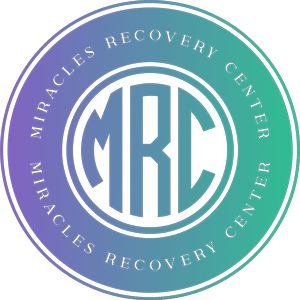Florida is in crisis when it comes to drug addiction and overdose deaths. According to FLHealthCharts, Florida experienced 8093 fatal overdose deaths, and Florida EMS responded to 105,490 overdoses in 2022. when we look at Martin County, where Stuart, FL is located, there were 34 fatal overdose deaths, 722 calls to EMS for overdoses, 196 doses of Naloxone administered and 503 drug arrests in 2022. With so many people struggling with addiction, getting help at the right treatment center is of paramount importance. This is because the right drug treatment center can help you detox, provide the best therapy programs for your needs and give you life skill guidance that can help you achieve and remain sober. Let’s take a look at how drug rehab in Stuart can help you.

Table of Contents
- 1 Types of Drug Rehab Programs
- 2 What to Expect During Drug Rehab
- 3 Dual Diagnosis Treatment in Stuart
- 4 Conclusion
Types of Drug Rehab Programs
There are many different types of drug rehab programs available in Stuart, FL, including inpatient, partial hospitalization, outpatient and intensive outpatient.
Inpatient/Residential Treatment Programs
Residential treatment programs provide round-the-clock care in a structured, supportive environment. Patients live on-site for a set period of time, typically ranging from 30 to 90 days, and receive individual and group therapy as well as medical care. These programs work great for individuals who are worried about being tempted to use drugs while they recover from their addiction.
Benefits of Inpatient Treatment
- Patients have access to 24/7 support.
- There are no distractions so patients can focus on their recovery.
- The individual can receive peer support from others in the program.
- Residential treatment offers customized programs.
- The environment is safe and secure, which reduces the likelihood of relapsing while in treatment.
Drawbacks of Inpatient Treatment
- It’s the most expensive type of drug rehabilitation program.
- Patients may have limited contact with family and friends while in treatment.
- Patients may struggle with adjusting back to their daily routine after leaving the program.
- Individuals who have to go to work or school or who have family obligations wouldn’t be able to fulfill those obligations while in treatment.
Outpatient Treatment Programs
These programs allow patients to live at home while receiving treatment during the day or evening. Patients attend therapy sessions and other services, such as medication management, for a few hours several times a week. This works best for individuals who are highly motivated to recover from their substance abuse and still need the ability to attend work or school.
Benefits of Outpatient Treatment Programs
- They are less expensive than inpatient or residential treatment programs.
- There are a variety of treatment options available, including individual therapy, group therapy and relapse prevention.
- Patients can continue to receive support from their family and friends while in treatment.
- Patients can immediately apply the strategies they learn in treatment to real-life situations.
Drawbacks of Outpatient Treatment Programs
- Individuals in outpatient programs may have less professional support and supervision than those in residential programs.
- Individuals in outpatient programs may have less access to medical care or medication management than those in residential programs.
- Individuals participating in outpatient programs may be more susceptible to relapse if they do not have a strong support system outside of the treatment center.
- The typical outpatient treatment program can last between 90 days and more than 12 months, which could be a drawback for those who were hoping to get through their initial treatment program quickly.
Intensive Outpatient Programs (IOP)
These programs provide more intensive treatment than standard outpatient programs. Patients attend therapy sessions and other services for several hours a day, multiple days a week. However, they can go home after their treatment has concluded for the day. These programs work well for people who are severely addicted, have relapsed in the past or who have recently completed an inpatient program.
Benefits of Intensive Outpatient Programs
- IOPs allow patients to continue to live at home and maintain their daily routine, while receiving the extended offerings of intensive treatment.
- IOPs are often more affordable than inpatient or residential treatment programs.
- IOPs provide a structured treatment plan with a focus on individual and group therapy. Some programs also offer medication management and holistic treatment options.
- Patients can form strong bonds with others in the program who are going through similar experiences.
- Patients can immediately apply what they’ve learned in the program to their daily lives.
Drawbacks of Intensive Outpatient Programs
- IOPs are more expensive and time-consuming than regular outpatient treatment programs.
- When compared to residential programs, patients have less professional support.
- IOP programs typically last between 3 and 12+ months.
- Medication management and medical care may be limited.
- Individuals in IOPs may encounter more relapse triggers than those in residential programs.
Partial Hospitalization Programs (PHP)
These programs provide structured, intensive treatment during the day but allow patients to return home in the evenings. Patients attend therapy sessions and other services for several hours a day, several days a week, usually 5 or 6 days. These programs work well for individuals who are at a high risk of relapsing or who have recently completed an inpatient program.
Benefits of Partial Hospitalization Programs
- PHPs are a type of outpatient program that is more intense than an IOP program because they meet for longer periods of time most days of the week.
- Patients in PHPs receive intensive treatment during the day but can return home at night to eat and sleep.
- Patients in PHPs receive strong peer support from others in the program.
- Participants can apply what they’ve learned in treatment in their daily lives with no waiting period, like would be the case in a residential program.
Drawbacks of Partial Hospitalization Programs
- While PHPs are less expensive than residential programs, they are one of the most expensive types of outpatient treatment.
- Individuals participating in a PHP need to have a strong support system at home in order to prevent relapses.
- Individuals in PHPs may have limited access to medical care or medication management.
- Individuals in PHPs may feel like they have a lack of privacy while attending the program.
Dual Diagnosis Treatment Programs
These programs provide treatment for co-occurring mental health disorders and substance use disorders. Patients receive therapy and medication management to address both issues simultaneously. This program is ideal for individuals who have mental health issues and may have been self-medicating, which led to their dependency.
Benefits of Dual Diagnosis Treatment Programs
- Dual diagnosis treatment programs address both mental health disorders and substance abuse issues in a coordinated manner.
- Dual diagnosis programs take into account the unique needs of each patient.
- These programs have been shown to be effective in improving long-term recovery outcomes.
- Dual diagnosis programs involve a team of healthcare professionals, including psychiatrists, therapists and addiction specialists.
- Patients in dual diagnosis programs receive high levels of support and guidance.
Drawbacks of Dual Diagnosis Treatment Programs
- Dual diagnosis treatment can be complex, requiring a detailed assessment and a coordinated treatment plan that addresses both mental health and substance abuse issues.
- Dual diagnosis treatment may require a longer time commitment than other forms of addiction treatment, due to the need to treat both the mental health disorder and the substance abuse.
- Some patients may be reluctant to talk about their mental health issues, due to the perceived stigmas.
12-Step Programs
These programs use a peer support model to help patients recover from addiction. Patients attend meetings and work through the 12 steps with a sponsor. This program works well for individuals that want to mark their progress and are motivated by completing the steps.
Benefits of 12-Step Programs
- 12-step programs provide a sense of camaraderie and shared experience.
- 12-step programs provide a clear path to recovery.
- Some 12-step programs may be free to attend, making them accessible to individuals who may not have the financial resources for other forms of treatment.
- 12-step programs are widely available and easy to find in almost every community.
- Step-based programs have a long history of helping individuals achieve and maintain sobriety.
Drawbacks of 12-Step Programs
- Step-based programs are often associated with a religious or spiritual component, which may be off-putting for some individuals.
- Step-based programs are often peer-led and do not typically include the guidance or supervision of professional healthcare providers.
- 12-Step programs are a one-size fits all approach and normally cannot be customized or altered for individual needs.
- 12-Step Programs do not typically address co-occurring mental health disorders.
Holistic Treatment Programs
These programs use alternative therapies, such as yoga, meditation, and acupuncture, in addition to traditional therapy and medical care, to treat addiction. Many people going through addiction treatment find these therapies relaxing, and they can be combined with other types of drug rehab treatment.
Benefits of Holistic Treatment Programs
- Holistic treatment programs take a whole-person approach to healing and recovery.
- They are often customized to the individual.
- These programs often incorporate natural remedies such as acupuncture, massage therapy and herbal supplements, which may have fewer side effects than traditional medications.
- They focus on addressing the root causes of addiction and promoting long-term healing and wellness.
Drawbacks of Holistic Treatment Programs
- Some holistic therapies do not have strong scientific evidence to support their effectiveness.
- Holistic treatment options may not be covered by insurance.
- Holistic treatment programs may require patients to spend significant amounts of time on their therapies, including yoga, meditation and acupuncture.

What to Expect During Drug Rehab
The first step to entering a drug rehab program involves an assessment. Assessments help determine the severity of the addiction and the correct level of care as well as the need for any additional services. Once a level of care has been determined, the individual will officially enter the treatment program and complete several stages.
- Detoxification – This is the first stage of the recovery process where the indivdual stops using their drug of choice and lets the substance leave their body.
- Entering the Treatment Program – Depending on the severity of the addiction, the individual may enter an inpatient or outpatient treatment program and start receiving recovery services.
- Therapy and Counseling – The core of drug rehab is typically therapy and counseling. The goal of therapy is to identify the underlying causes of addiction and to develop coping skills while learning how to prevent relapses.
- Aftercare Services – Aftercare services can include 12-step programs, additional therapy and support groups. This helps prevent relapses and keeps the individual’s recovery at the forefront of their mind.
Making the most of a drug rehab program involves being committed to the recovery process and actively participating in all aspects of treatment. Remember to be honest and open with your treatment providers, set realistic goals, develop a support system and participate fully in all aspects of your treatment program.
Dual Diagnosis Treatment in Stuart
For individuals with mental health issues and substance abuse, it’s important to find a treatment center that offers dual diagnosis, like Miracles Recovery Center. This is because other types of treatment programs, like 12-step programs and addiction recovery-only programs, won’t offer help or treatment for mental disorders. This can hinder your recovery, especially as you start to detox from your drug of choice. In order to give yourself the best chance at making a long-term recovery and managing your mental health conditions, it’s important to find a treatment center in Stuart that offers dual diagnosis.
Conclusion
If you’re struggling with addiction and/or mental health orders, you need a treatment center that understands the unique needs of every individual, like Miracles Recovery Center in Port St. Lucie, FL. We offer partial hospitalization, outpatient and intensive outpatient programs and specialized programs for seniors, women and young adults.
To get help for your substance use disorder, call us today!

